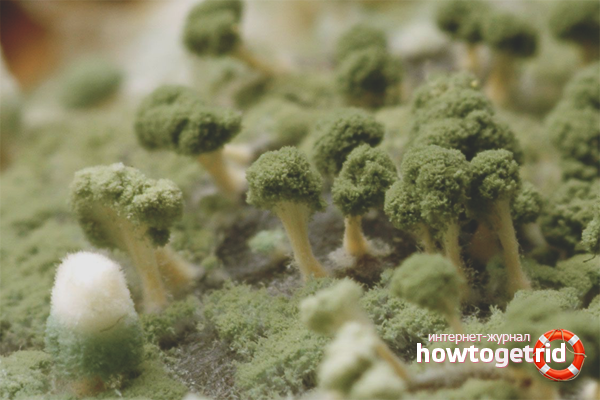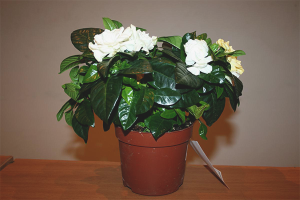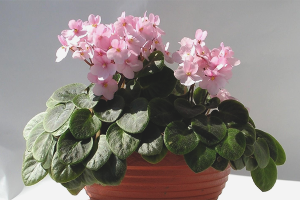The content of the article
Unfortunately, mold is a frequent companion to young seedlings. It can appear both on the plants themselves and on the soil around them. Many gardeners are at a loss as to why indoor flowers, standing next to the windowsill, do not suffer from mold - there is not even a trace of it, and next to it the growing seedlings are simply choking with a white mold cover?
The fact is that adult plants with a developed root system can produce special substances that can resist mold. But the young, with virtually no roots, can not fight mold spores.
Where does mold come from?
Spores of mold in the smallest doses are everywhere - in the ground, water, air. There are several ways that mold could get to your seedlings.
A lot of fungus in the ground.Therefore, before disembarking, it must first be sterilized. This can be done easily by placing the earth in a hot oven for a while. You can disinfect the soil by holding it for half an hour in a water bath - this is also very effective.
But even the sterilized soil can be contaminated with mold. From where, you ask? The fact is that the spores of the fungus can be in the water with which you water the seedlings, and even in the air. However, the growth and development of mold occurs only in certain conditions.
In what conditions does mold develop?
There are some factors that create favorable living conditions for mold. To defeat the mold, it must be deprived of these factors.
- Cold. If the temperature in the room does not rise above 20 degrees, it is on the mold hand. Create favorable conditions for seedlings, but not for the fungus - increase the temperature of the air in the room.
- Dampness. A large amount of water not only favors the development of the fungus, but also destroys crops. Before planting do not forget about the drainage holes that will help excess moisture to go outside.
- The absence of ultraviolet light. Everyone knows that ultraviolet is a natural antiseptic that can kill mold and fungus spores.But few know that the usual glass window does not let the rays of the ultraviolet light through, leaving them outside. From time to time, place a container of seedlings in the open air to get rid of mold.
- Acidity. High acidity or high content of peat is a favorable environment for the development of mold. Before planting, reduce the acidity of the soil by pouring it with slaked lime.
Often the mold develops in unventilated spaces, especially when the seedlings are covered with foil. To avoid this, you need to regularly open the "greenhouse" so that air circulates there.
How to get rid of mold on seedlings
Mold is harmful enough to seedlings - it can penetrate the seed and destroy it from the inside. To cope with the mold that has already appeared on the seedlings and on the soil, you need to hold a series of resuscitation measures.
- First you need to carefully remove the mold from the top of the soil. This can be done with a simple spoon.
- After that you need to make several holes in the soil with a stick or a pencil. So the soil dries faster.
- Then the container with the seedlings should be put in a warm, well-ventilated place.
- If there are no drainage holes in the pot, you must immediately make them. Only everything should be done carefully, so as not to damage the seedlings.
- After a few days, when the soil dries out, it needs to be treated with phytosporin. This is a special tool that can protect young plants from rotting, bacteriological and fungal diseases.
Subsequently, after the adopted set of measures, you need to remember that the seedlings should not be poured, it can die.
How to cope with mold
There are some more effective ways to help you get rid of mold on seedlings.
- As noted, mold often indicates that soil acidity is increased. You can fix it, even in the process of growing seedlings. Dissolve a couple of tablespoons of ash in a liter of hot water and wait for the next day. After a day, pour the ground over the prepared solution.
- If there is no ash on hand, you can use baking soda instead. Per liter of water will need half a teaspoon.
- To prevent mold,You can sprinkle the surface of the soil with river stones. However, they are preliminarily calcined in the oven so that no infection remains on them. Instead of pebbles you can use charcoal - its properties resist the formation of mold.
- If you use only home remedies, then instead of charcoal you can safely sprinkle the soil with activated charcoal.
- Ventilate the seedlings regularly - they must be in the fresh air for at least half the time.
- If you flooded the seedlings, leave it without film for 3-4 days until it has completely dried out.
- Loosen the soil regularly to allow air to circulate in it.
- Among the professional tools to combat mold in the seedlings can be noted Mikosan. This biofungicide can be used for plants grown at home, the main thing is to follow the instructions and proportions. Mikosan not only kills mold, it produces a lasting plant immunity from pests. In addition, it is a great natural growth stimulant.
If you are only going to plant seedlings, this problem must be taken care of in advance. Pre-determine the acidity of the soil, and if it is elevated,reduce it with improvised means. Also, seeds must be soaked before planting in potassium permanganate or diluted aloe juice. This will protect them from possible spores, bacteria, infections.
Mold on seedlings is not a sentence. And this does not mean that the plants can no longer be saved. Although mold and harmful, it is quite possible to get rid of it. The main thing is to act competently and consistently. Take care of your seedlings and get a good harvest!
Video: why mold appears on seedlings and what to do with it












To send
Thank you very much for the mold article, very useful.